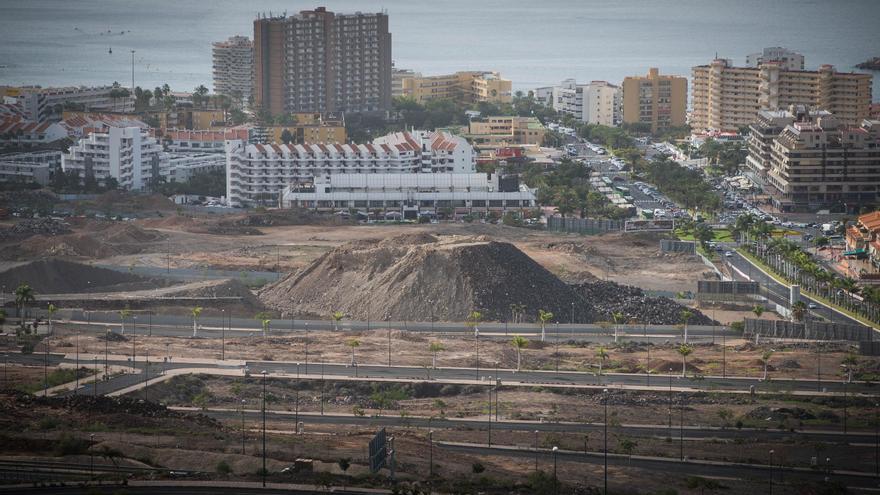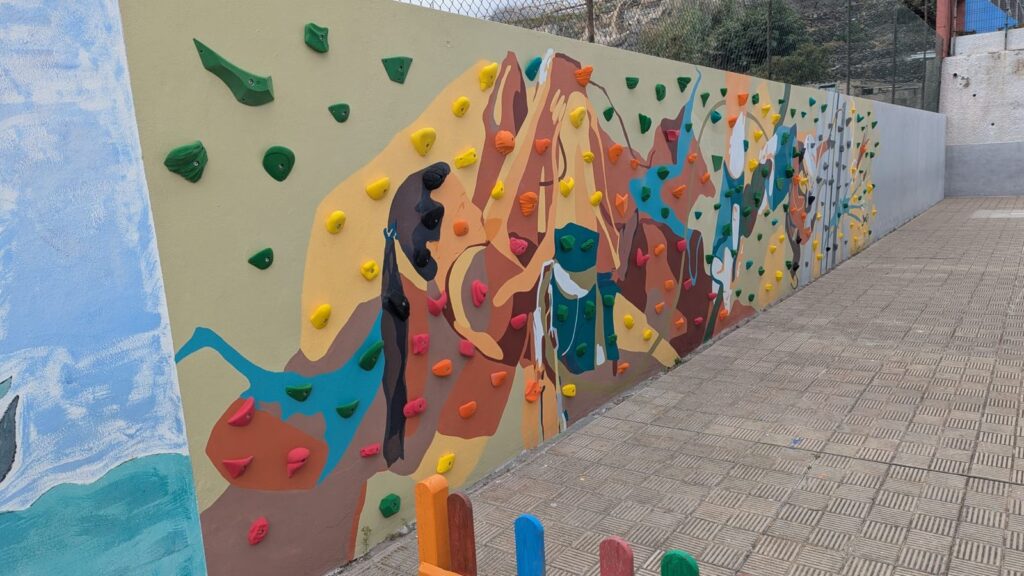
The proposed new city set to be developed in the Arona municipality of Tenerife is expected to provide 9,000 accommodations, comprising of residential and tourist options. These figures have been projected by the Arona City Council, which anticipates the release of the El Mojón Partial Plan land in the upcoming weeks, marking it as the largest urban development area in the Canary Islands, eagerly awaited by both residents and investors for over 30 years.
The million square meters designated for the expansion of Los Cristianos, stretching between Chayofita Avenue and Hospital de Sur above the TF-1 highway, . This expansion project carries a substantial weight: over billion euros in public and private investments and more than 4,000 employment opportunities.
Spanning an area larger than the town of Los Cristianos itself –10 square kilometers by 7 of this coastal center–, El Mojón has been carefully planned to avert large population concentration typical of other areas in southern Tenerife.
Nevertheless, Given the vast expanse, the increase in available residences and hotel accommodations is significant. Out of the 8,634 total accommodations incorporated in the aronero municipality, 6,636 are residential – none initially designated for official protection – and 1,998 are intended for tourism. There is potential for more, but the design of the Partial Plan has favored minimal residential and hotel use coefficients.
The Arona City Council has initiated the process to finally unlock this vast expanse of land, which has the essential framework for urbanization owing to the construction of fundamental infrastructure and systems such as streets, electrical installations, sanitation networks, pumping stations, and furnishings.
The Urban Planning Department under the leadership of Luis García (Más por Arona), has convened an extraordinary Information Commission meeting to present for discussion and review the agreement between the Arona City Council and the Compensation Board of the El Mojón Partial Plan, uniting the landowners.
Out of the 8,634 total accommodations, 6,636 are residential – none initially designated for official protection – and 1,998 are intended for tourism
Upon completion of this stage and two subsequent steps – presenting the agreement to the Board of Spokespersons, consisting of representatives from the political groups in the City Council, and subsequently to the plenary session – the municipal government will oversee the complete urbanization, referred to as the administrative process in which a council takes on the maintenance of a set of plots. Subsequently, Arona Urban Planning will be able to commence processing building permit applications for both private and public plots as urban areas.
The statistics are staggering, particularly considering the scarcity of urban land in the Canary Islands. A Partial Plan of this magnitude prepared for development is without parallel in the Archipelago. Out of the 908,000 total square meters, 575,400 are allocated for private purposes – encompassing hotels, residential properties, commercial establishments, restaurants, cafes, gyms, and more – and 332,900 are designated for public use. This public segment, constituting 36% of the total El Mojón Partial Plan, serves as a relinquishment by landowners in exchange for exploitation rights in the various designated areas.
Out of the 908,000 total square meters, 575,400 are allocated for private purposes and 332,900 are designated for public use.
The 70 private plots are intended for tourism, residential, commercial, and sports purposes, while the public segment holds significant prominence and has been devised to steer clear of high population densities, providing ample recreational spaces for residents and visitors alike.
For instance, the two expansive parks cover an area of 52,800 square meters. Upon completion, these parks will rank as the largest among the tourist municipalities in Tenerife. An additional 115,700 square meters have been earmarked for green spaces. The roadways, parking lots, and pedestrian zones will span across 120,000 square meters; educational provisions will occupy 11,400 square meters; public athletic facilities, 15,900; and the recreational and leisure facilities will span across 202,100 square meters.
The Mojón Partial Plan: A Land of Opportunity for Development in Arona, Tenerife
Inaugurated in 1985, and crafted by Rubens Henríquez, an architect from La Palma (1925-2017), the El Mojón Partial Plan was sanctioned through the Urban Planning and Environment Commission of the Canary Islands (Cumac) on October 1, 1996.
Despite numerous bureaucratic obstacles and political disputes, the execution of the plan has been delayed. Notably, in 2015, the urban planning agreement, based on the General Management Plan (PGO) of Arona, was signed by the City Council and the Compensation Board in January of that year, only to be annulled five months later due to a ruling by the Supreme Court.
The drawn-out challenges and political debates have hindered the implementation of this major land exchange in the Canary Islands
The anticipated resolution had been announced twice before, in 2018 and 2023. Furthermore, The municipal administration, under José Julián Mena, signed the agreement with the Compensation Board on both occasions.. The present Arona Government, jointly led by PP, Más por Arona, and CC, now contends that the previous agreements did not facilitate the reception of the urban framework already implemented, consequently, delaying the land release and construction permits. Three key stumbling blocks emerged: the incorporation of a connecting walkway-bridge for the two large parks, environmental impact assessments of said parks, and the construction plans for a water pumping station.
The Urban Planning team, led by Luis García, believes they have resolved the obstacles by separating the parks, ready for inauguration, from the rest of the Partial Plan until issues regarding environmental assessments are resolved with the Government of the Canary Islands.
The assessment of the parks will be dealt with separately, hence, not impeding the imminent land release. Both small and large investors are closely monitoring the upcoming events, given the potential for numerous business ventures in the heart of the area that draws the most tourists in Tenerife.














